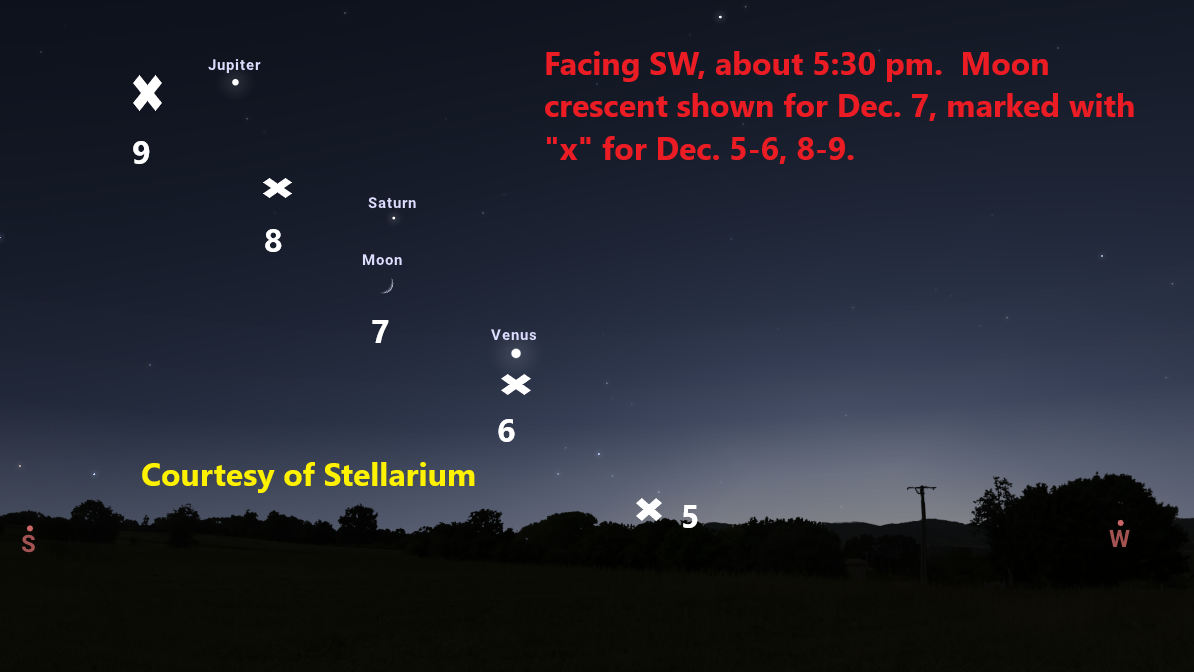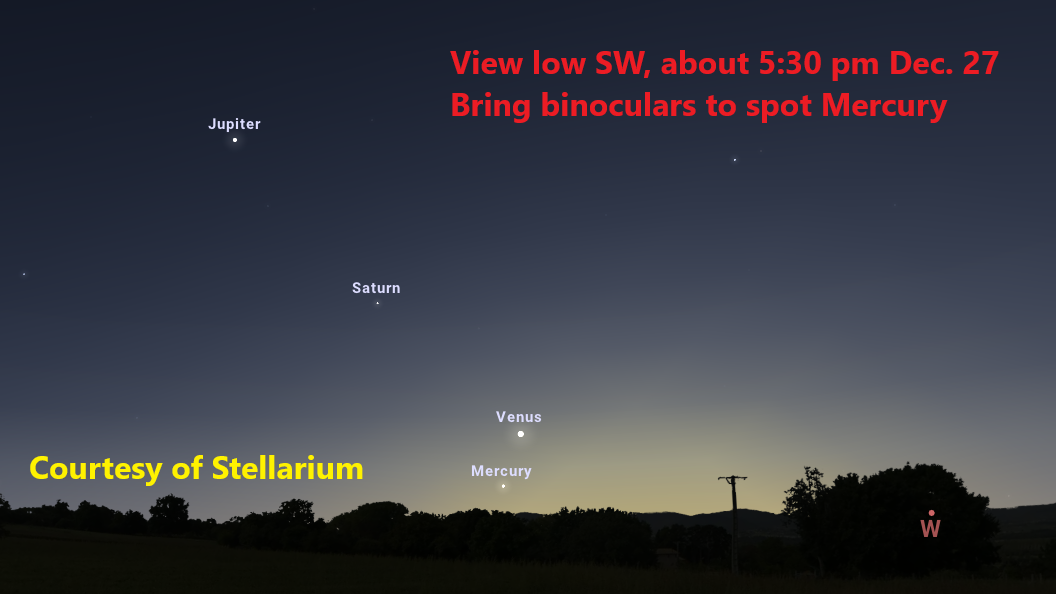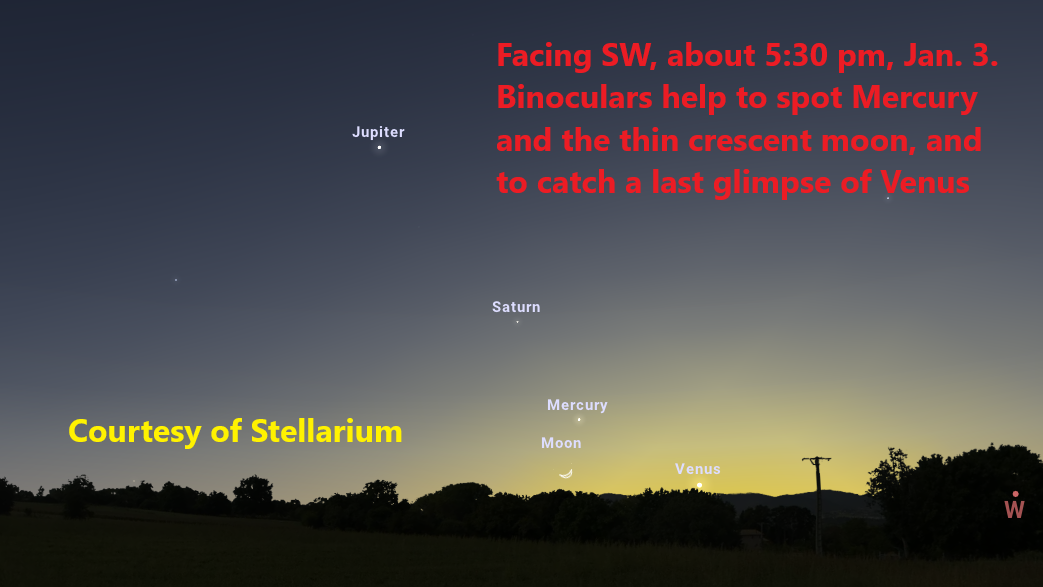HOLIDAY CRESCENT PRESENT
There is a pretty large community of those who keep an eye on sky events, and we were given a very rare holiday present last year with the Great Conjunction of Jupiter and Saturn, which appeared to almost merge together as seen with the unaided eye last December 21. The two planets appear about twenty degrees apart in the sky this year, or about two fist-widths as seen at arm’s length, so they still are very much in the same area, the south to southwestern sky as it begins to get dark after sunset. As can be seen from the pictures below, Jupiter is much the brighter of the two, with Saturn to the lower right.
For pure spectacle, we get to witness Venus’ dramatic departure from our evening skies this month, concluding at the beginning of January. Even brighter than Jupiter, Venus blazes away in the southwestern sky, setting nearly three hours after sunset at the beginning of December. But this is the time, occurring once every 19-20 months, in which our nearest neighbor planet begins to pass more and more between the Earth and Sun. Night by night, Venus will appear lower and lower in the sky. The change is at first very gradual but gains increasing speed as December goes on. Venus sets two hours after sunset on Dec. 22, declining to just one hour on January 2. By then, you will need to find a spot with an open view to the southwestern horizon if you hope to keep following it for a few more days.
As it passes between Earth and Sun, Venus gets closer to Earth and gains in apparent size, while at the same time, its lit side turns more and more away from us. This causes Venus to appear as a thinner and thinner crescent, which might be noticed in steadily held binoculars by late December, or especially in a small telescope.
The map below shows the Moon’s progression through the area between December 5-9. Around the 7th, Venus’ crescent as seen in a telescope closely matches that of the Moon as seen with the unaided eye. Notice how Saturn appears almost equidistant from Jupiter and Venus around this time.

A line of X’s mark the spots where the Moon will appear between December 5-9, near the planets Jupiter, Saturn, and Venus. A landscape horizon is shown.

Mercury, Venus, Saturn, and Jupiter above the landscaped southwestern horizon.
During the last few days of December, Mercury comes into view, making our planetary grouping a short-lived foursome. Since it is smaller and farther away and does not have much of an atmosphere to reflect the Sun’s light, Mercury shines much dimmer than Venus and binoculars can help see it better.
Perhaps the best night to say good-bye to Venus will be on January 3. By then, that open horizon to the southwest will be absolutely critical. Watching about a half hour after sunset, first note the beautifully thin crescent moon just above the horizon. Look about one fist’s width to the Moon’s right, and you should catch Venus in binoculars, and perhaps, if the night is very clear, with the unaided eye. Venus’ crescent will appear just one percent lit on this evening. If you have binoculars, can you still follow Venus for a few more days? The actual date of inferior conjunction will be on January 8, with Venus then passing into the predawn sky. Although they may not have completely understood why, ancient sky-watchers were well aware of this sequence of events- more about this next month!

Mercury, Venus, Jupiter, Saturn, and a skinny crescent shaped moon appear above the horizon.
